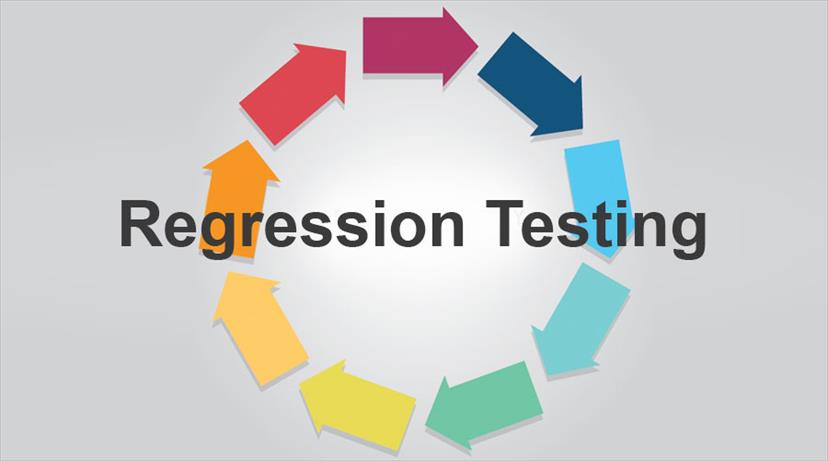One of the best company to work and IT solutions. Delivered product quickly and very fast. It was really mice working with them. I will give them move orders.
- Whatsapp Chat
- Telegram Chat
- Email: info@tritansolutions.com
- Skype:
- Login / Register
Regression Testing Guide – Types and Techniques | Tritan Solutions|
Bhavna Singh
 Close
Close
About Author
Name: Bhavna Singh
A thriving journalist and content writer as well, Bhavna has been closely associated with Tritan Solutions. She has completed her graduation in Electronics from prestigious Delhi University. She is currently heading the Marketing and Communication niche of Tritan. She is a cosmopolitan reader and believes in exploring the profusion of seamless opportunities that lie in exploring oneself . "Always be the HEROINE of your life, Not the victim"
Regression testing is a combination of all the functional, integration, and system test cases. From regression testing types to best practices to most popular tools, see our guide on regression testing.

Regression Testing
Table Of Contents
- What is Regression Testing?
- Why regression testing?
- When to do Regression Testing?
- What are Types of Regression Testing?
- What is Regression Testing in Agile?
- Conclusion
What is Regression Testing?
Regression testing is a crucial category of software testing that revolves around re-running functional and non-functional tests. These tests are performed to assure and review the previously developed and tested software still executes well even after an alteration is made in the software. Mainly, it checks whether the previous functionality of an application is functioning as planned even with a new feature added. It inspects for any new bug or mistake in the existing software and is a verification procedure that takes place in the software.Whenever the new software is released, there is a vital necessity to test the new functionality. There is an urgency to re-run the old tests to assure that new software does not re-introduce any old deformities or create new ones that might influence the existing functionality. Though software regression testing seems to be an easy concept, it is relatively problematic as it tests the functionality of the added elements. This verification procedure effectively holds vast significance, particularly when some continuous changes or modifications are made in the application.
Software regression testing should be executed and taken up as soon as the programmer adds different functionality to an application. This is because of the dependence between the newly added and earlier functionality that is crucial for the software to function according to the requirements characterized.
Why regression testing?
- Whenever a new characteristic is developed, or when an existing character is enhanced, or if there are any UI updates made, ideally there is a dier desire to execute software regression testing. Functional and regression testing should be executed to assure that the transitions do not affect the existing functionality of the software.
- In addition, the regression testing process should be executed whether there is a small or a large change in an application that might influence any change to its old functionality.
- Functional regression testing teams must verify that the new code does not clash with the older code, and verifies that the code that has not been remade is still working as anticipated. Thus, this category of visual regression testing assures that the previous functionality of the application functions effectively and new alterations have not introduced any fresh bugs within the application.
- Thus, the regression testing procedure is a crucial element of software quality assurance. Along with unit and integration testing, software regression testing when taken up specifies defects early and enables to decrease the cost to resolve and fix problems early.
When to do Regression Testing?
It should be taken up when:
1) New functionality comes in:
It is one of the significant stages to commence the regression testing procedure. Whenever the developers introduce new code, they don’t wholly focus on its compatibility with the existing code and hence the software regression testing should be taken up to discover any feasible problems within the software.2) Changes in Existing functionality:
Sometimes within the agile software development procedure, developers rework the existing functionality and exclude/edit some features based on the customer's requirements. In such cases, the functionality and regression testing procedure test the new changes have caused any harm to the rest of the functionality or not.New Integrations take place with different productsWhat are the categories of Regression Testing?
Regression testing categories
- Corrective Regression Testing
- Retest-all Regression Testing
- Selective Regression Testing
- Progressive Regression Testing
- Complete Regression Testing
- Partial Regression Testing
- Unit Regression Testing
What is Regression Testing in Agile?
In an agile environment, the software testing requires to be taken up with each sprint and the quality assurance testers should make sure that new alterations do not influence the existing functionality of the application. Also, in agile scenarios with iterative alterations, there are more periodic build cycles and continual changes are added to the application. This manner of systematic change makes software regression testing necessary in agile.Therefore, for successful regression testing in agile, the testing team should pursue a beneficial regression testing strategy and create the regression testing suite from the beginning of software product development. The QA teams should proceed to develop the test scripts alongside each development sprints to assure effective regression testing is accomplished.
Conclusion -
Therefore, Regression testing is a credible way to assure that the application stays defect-free even after periodic changes. It furthermore assures that the recent changes have not broken any existing functionality. Regression testing should be executed to discover bugs in a new software release and assures the earlier bugs are fixed. The procedure of regression testing should be taken up with any new alteration in features and these should be ascertained with a practical regression test automation strategy and can be tested either manually or by utilizing an automated regression testing framework and tools.Leave a Reply
0 Comment









